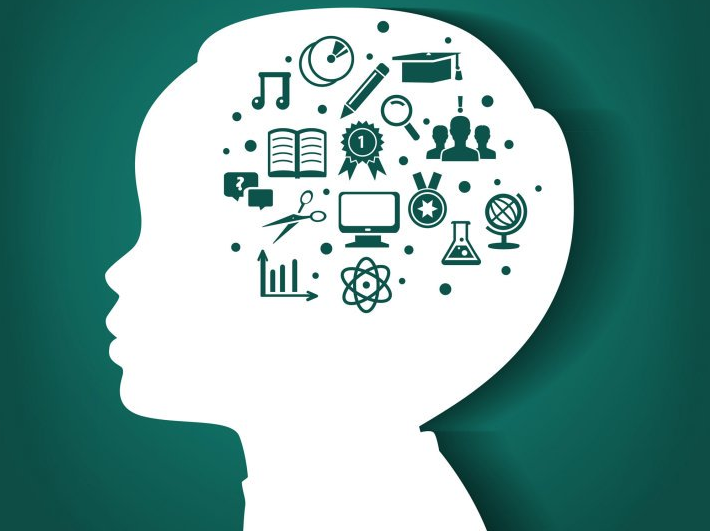
Resetting The Mind To Focus: The Science of A Brain Break
Photo Credit: Edutopia
Today's neurostudies of how the brain develops and functions have been enhanced by the use of neuroimaging devices like EEG's, MRI's, and PET scans, with which we can actually see thinking as it happens. These images give us a glimpse of an inner world we've never previously been able to see and give neuroscientists direct proof of cause and effect, opening floodgates for effective learning strategies for students. For suggestions we found on the subject, beyond the science read our story: 8 Classroom Brain Break Suggestions
Dr. Judy Willis, in her Edutopia article Using Brain Breaks to Restore Student's Focus: Learn about the science and classroom applicability of these quick learning activities offers the following:
Early in my teaching career, I was disturbed by a note left by the substitute teacher. She wrote that during the three days she was with my students, they were responsive during the first part of class, but that many of them became inattentive, distracted, and even disruptive after about 20 minutes of her instruction. When I asked the students what had happened, they were of one voice: “She didn’t give us our brain breaks.”
For students to learn at their highest potential, their brains need to send signals efficiently from the sensory receptors (what they hear, see, touch, read, imagine, and experience) to memory storage regions of the brain. The most detrimental disruptions to traffic along these information pathways are stress and overload. Brain breaks are planned learning activity shifts that mobilize different networks of the brain. These shifts allow those regions that are blocked by stress or high-intensity work to revitalize. Brain breaks, by switching activity to different brain networks, allow the resting pathways to restore their calm focus and foster optimal mood, attention, and memory.
The Neuroscience of Brain Breaks
For new information to become memory, it must pass through an emotional filter called the amygdala and then reach the prefrontal cortex. When students’ brains become anxious, highly confused, or overwhelmed, the activation of the amygdala surges until this filter becomes a stop sign. New learning no longer passes through to reach the prefrontal cortex and sustain memory. Even if students are not stressed by the pace or content of new learning, a point arises when the amygdala exceeds its capacity for efficient conduction of information through its networks into memory.
Brain breaks can be planned to restore the emotional state needed to return the amygdala from overdrive into the optimal state for successful information flow.
Brain Breaks Restore Brain Supplies
Neurotransmitters are brain chemicals that carry messages from one nerve cell to the next, across gaps between the cells called synapses. These message carriers are necessary to keep one’s calm, focused attention and maintenance of a new memory. Neurotransmitters are in limited supply at each synapse and can deplete after as little as 10 minutes of continuing the same type of learning activity (attentive listening, practice drills, note-taking).
Brain breaks, by switching the type of mental activity, shift brain communication to networks with fresh supplies of neurotransmitters. This intermission allows the brain’s chemicals to replenish within the resting network.
Timing
Brain breaks should take place before fatigue, boredom, distraction, and inattention set in. Depending on students’ ages and focus development, brain break frequency will vary. As a general rule, concentrated study of 10 to 15 minutes for elementary school and 20 to 30 minutes for middle and high school students calls for a three- to five-minute break.
Brain Break Strategies
Brain breaks do not require disruption in the flow of learning. Simply stretching, moving to a different part of the room, or singing a song can revitalize the brain. Use your learning goals and students’ responses to guide you in selecting the best type of brain break. You might decide to use the time to boost mood or motivation, as well as restore the brain’s peak performance.
Mood
To restore the emotional state needed to bring the amygdala back from overdrive, help students build habits of emotional self-awareness and mindfulness. Prepare them for successful self-calming brain breaks by demonstrating and providing practice times as they build experience using mindful breathing or visualizations.
Neuroscience has yielded information on activities that increase restorative neurotransmitters such as dopamine. Some of these activities, such as laughing, moving, listening to music, and interacting with peers, make great mood-boosting brain breaks:
• Read aloud from a relevant and engaging book.
• Introduce physical activity such as jumping rope, singing a song with movements, or tossing a beach ball while students ask and answer questions to review the topic—these are all great dopamine boosters. They also increase the blood flow and oxygen supply to the brain.
• Have students move in ways that they think a character in literature or person in history would at a designated event. Or move to imitate a biological, physical, or mathematical process.
Motivation
Especially when topics of study are necessary foundations but are not of high personal relevance to students, brain breaks can enhance their motivation to attend to a potentially tedious subject.
• Tell a true anecdote about the author, historical persona, or scientist when they were the same age as your students. This will personalize the topic and boost interest and engagement.
• Use dopamine boosts from personal connections and personal relevance by inviting students to share with partners something about how the learning relates to their lives or interests.
After just a few minutes, students’ refreshed brains are ready to return to the next learning activity with a subdued amygdala and full supply of neurotransmitters. Both they and you will reap the benefits of this restoration.
Sourcing Information:
10 Mindful Minutes by, Goldie Hawn with Wendy Holden, Foreward by, Daniel J. Siegel, MD
Judy Willis, MD Neurologist, Teacher, Grad School Education Facilty, Author for Edutopia

